Join us as we discuss the importance of variable rate fertilizer and identifying trends in data.
https://www.facebook.com/LathamSeeds/videos/292211041398034/
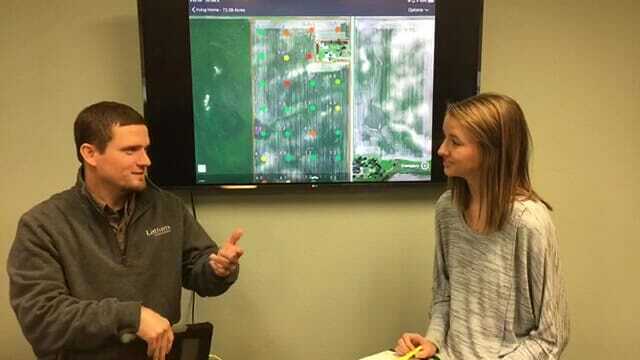
Join us as we discuss the importance of variable rate fertilizer and identifying trends in data.
https://www.facebook.com/LathamSeeds/videos/292211041398034/
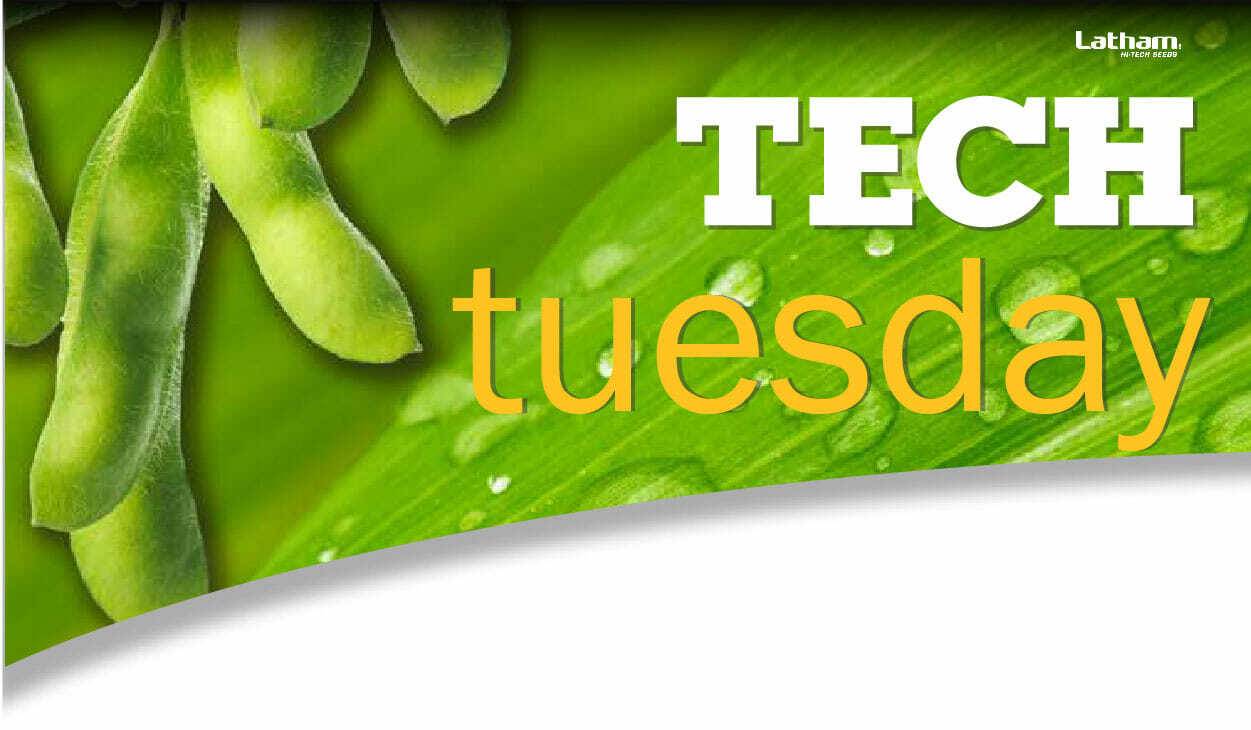
As spring turns into early summer, our focus turns from getting the crop planted to keeping it clean and healthy. Mother Nature has made it challenging to put down timely applications of herbicides, fertilizer and micronutrients this year.
Information gathered from several places helps us determine whether our growing crop will have enough food to reach its full yield potential:
1. Pre-planting soil tests.
Soil tests, taken in the fall or early spring, are used to see what is available for plants to uptake during the growing season.
2. Fertilizer applied at planting time.
A general broadcast application of N-P-K with or without micronutrients and a starter fertilizer is usually put down at planting time. Some planters also have the ability to apply micronutrients.
3. Current field information.
Random soil tests can verify if the nutrients previously applied were lost due to a weather event. These tests also indicate if there’s a proper balance of micro- and macronutrients. Some folks believe an early tissue test can reveal if micronutrients are lacking for early crop growth. I prefer to take tissue samples after a plant’s root system is totally developed to reflect the value of N-P-K.
With this information, we can make fertilizer adjustments to balance the crop’s needs and adjust application based on anticipated corn yields. This allows us to apply what is needed without over applications. This saves money and helps avoid nutrient runoff and waste.
Latham’s Seed-2-Soil® program can help with (1) nutrient management; (2) FieldXField TM crop planning; (3) seed treatments and (4) agronomics. Learn more at LathamSeeds.com or by calling 1.877.GO.LATHAM (1.877.465.2842).


Many farmers are asking about the possibility of nutrient loss from the unprecedented rains we received in December. While there is definitely cause for concern, don’t assume all fertilizer that was fall-applied is lost. Also keep in mind that the amount of loss will depend on the specific nutrients that were applied, as well as whether it was in the dry, liquid or gaseous form.
Phosphorus (P) and Potassium (K): Most experts agree that P & K applications are very stable no matter the time of year of application. It’s not unusual to have these products applied on frozen ground and see little, if any, loss prior to planting. One “watch out” here is if the December rains caused soil loss due to runoff. If this happened, then it is most likely that you also lost some P & K.
Nitrogen (N): Two main reasons for N loss are leaching and nitrification. Leaching refers to the actual loss of nutrients from downward movement through the soil profile. Since the ground in most areas was not frozen prior to the rains, this process could have a significant effect. Because the rain came fairly fast, there was considerable ponding and runoff in some fields. These will be the greatest areas of concern. Nitrogen loss here will not be uniform and will be extremely difficult to quantify. If drainage tiles ran, that is another avenue for N loss that may need to be considered.
The most common form of fall-applied nitrogen is anhydrous ammonia (NH3). When applied, it quickly converts to ammonium (NH4), which is a positively charged particle. Nitrogen is fairly stable in this form as it is held onto the negatively-charged soil complex. Ammonium eventually converts to the nitrate form by the process of nitrification. Since this is a biological process, the rate of conversion is determined by the soil temperature.
Nitrification does not stop, however, it slows down considerably when soil temps are below 50° Fahrenheit. This is the reason most agronomists recommend fall N applications after soils have fallen below this temperature. The nitrate form of N is the most susceptible to leaching. There’s a very good chance of N loss from the nitrification process if you applied nitrogen before soil temps fell below 50°F. Applications made later on (in colder soils) have a much less chance of significant loss.
It’s too early to determine nitrogen loss from December rains. We’ll wait until early spring to see how the weather develops and see the fields look after they thaw. For additional information on the potential for nitrogen loss, click here for an article from Dr. John Sawyer, Extension Soil Fertility Specialist, Iowa State University.
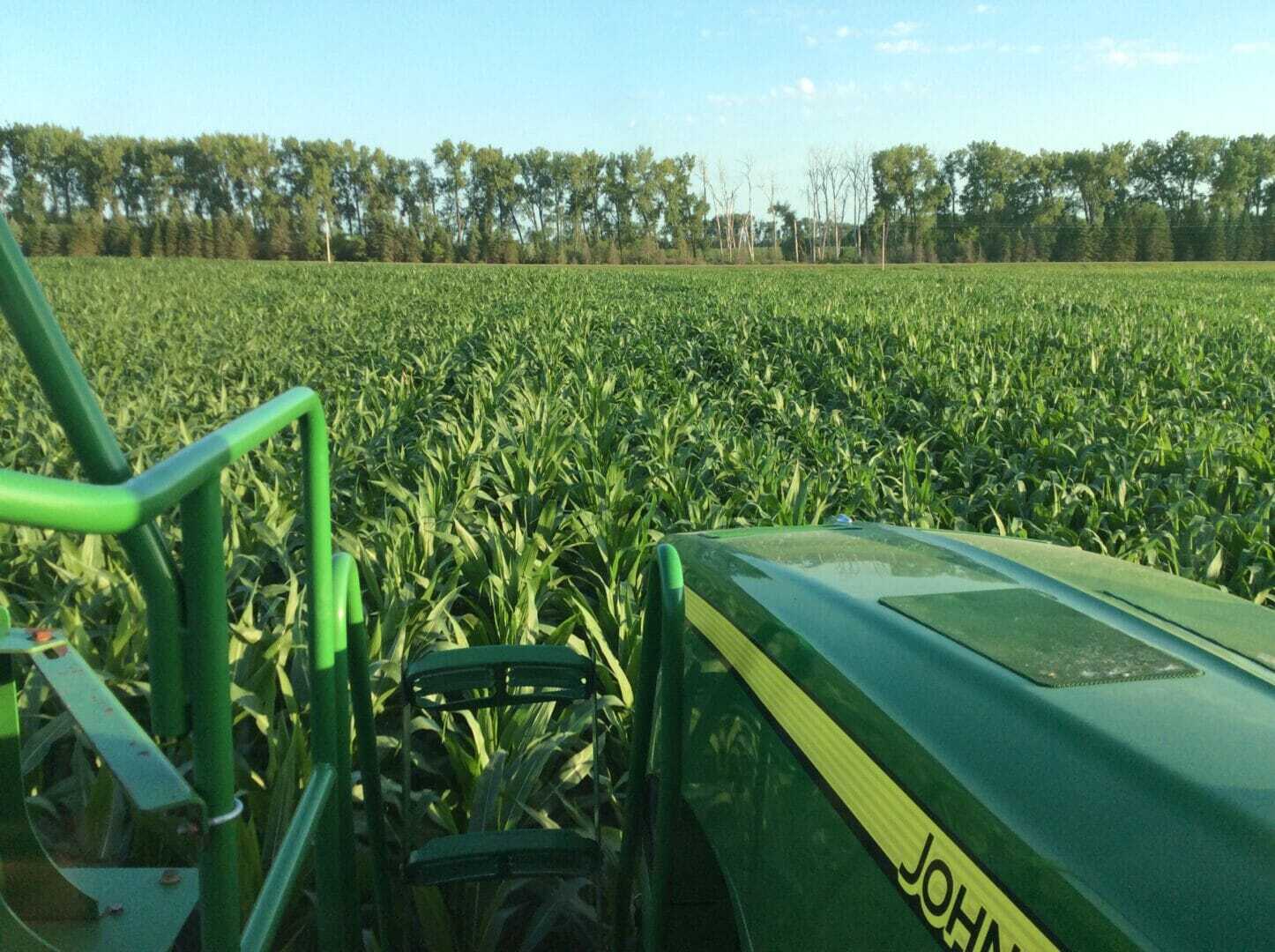
With warmer temperatures, soybean plants across the Upper Midwest are entering a rapid growth phase. It’s no wonder so many of our sales managers, in Wednesday’s #FromtheField crop updates, reported seeing signs of Iron Deficiency Chlorosis (IDC) symptoms now.
The most common symptom, interveinal chlrosis, is a yellowing of the leaf tissue between the veins while the veins themselves remain green. The yellowed portions eventually turn brown, and the entire leaflet may drop off the plant. If severe, entire plants can be stunted or even die causing major yield loss.
Although not completely understood by researchers, the most likely cause of IDC is a soil pH level above 7.3. Symptoms are severe in soils with pH levels of 7.8. However, soil pH alone may not be the only factor in limiting iron. Other factors are poor drainage, high soluble salt content and excess calcium carbonates.
Research has proven planting IDC-tolerant soybean brands is really the best management practice. To help farmers better identify those soybeans that have high tolerance to IDC, Latham Hi‑Tech Seeds has designed a lineup of soybeans as IRONCLAD™.
Only a soybean brand that is Soybean Cyst Nematode resistant with an Iron Deficiency Chlorosis rating of 2.2 or better can earn the IRONCLAD designation. Depending on your specific needs, IRONCLAD brands must also protect against either White Mold or Sudden Death Syndrome with a rating of 2.2 or higher. Furthermore, these products must have strong defensive ratings against Phytophthora Root Rot and Brown Stem Rot.
IRONCLAD soybeans have been especially developed to withstand the high pH, high salt soils in our marketing area. Be assured these Latham brand soybeans have undergone thorough testing and are the best possible choices for fields with a history of severe Iron Chlorosis. Protect yield with Latham® soybean brands proven to have good IDC tolerance.
P.S. Just because these products are selected for their “defensive” characteristics, however, doesn’t mean you’re sacrificing yield. Check out our 2014 F.I.R.S.T. Trial results!
|
|
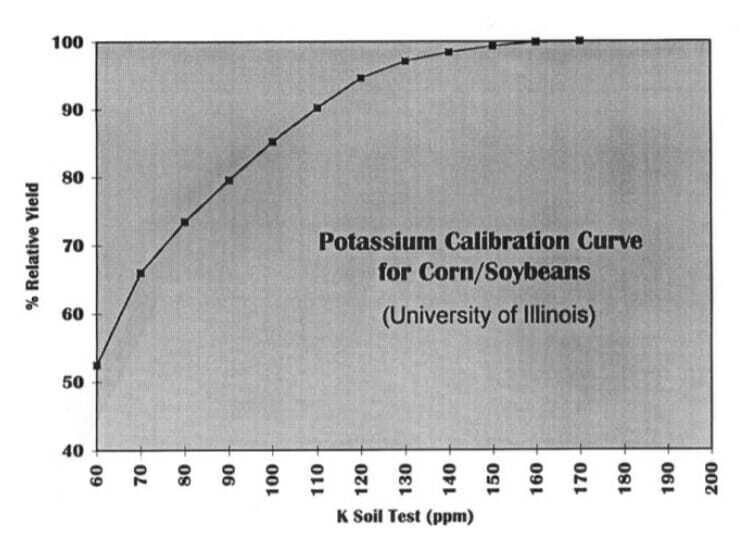
 by Peter Bixel, Seed-2-Soil
by Peter Bixel, Seed-2-Soil
With commodity prices lower, it’s certainly prudent for farmers to rethink each input expense. Crop inputs are certainly one big investment! I’m a farmer myself, so I understand the value in evaluating investments.
Analyzing investments is really an exercise in managing expectations. We might settle for returns of 2 to 5% on our bank savings accounts and 401K, right? We don’t want to skimp on investments that will help us in the future. So why skimp on your Phosphorus (P) & Potassium (K) fertilizer investments? After all, an investment in P & K has the potential to return 100-700%!
Phosphorus aids in healthy root growth, as well as flower and seed production. Potassium is responsible for improving overall health and disease.
Local data is critical for analyzing where your fertilizer dollars are best spent. Our data shows that across 400,000 acres, phosphorous values continue to be in the High category of soil test values with an average of 28ppm. This is more than likely because of manure history, fertilizer application and soil types in our area. However, potassium levels continue to be an area that needs to be addressed in order for us to not mine what we have invested in building up. Potassium levels are in the medium category with an average of 160ppm, while we are trying to reach 200ppm and higher.
Take a look at the Potassium Calibration Curve below. With low soil test K values, your potential for high yielding crops dramatically decreases. Take your 2013 Local Data, looking at Corn on Corn Yield to Soil Test K, as soil test levels go from Low to High categories, yield increased 20bu/ac. How do these returns look to you?
Potassium plays an important role in the utilization and uptake of Nitrogen and in turn meaning improved N use and higher yields. Higher rates of K allow for efficient use of more N, which resulted in better early vegetative growth and higher yields. K fertility is another important piece of the puzzle for high yielding crops.
With tighter margins moving into 2015 crop year, it is important to remember to use YOUR data to help make the best investment decisions and to make sure you don’t mine your soil fertility.
Make sure you’re not losing a dollar by trying to save a penny!
Rachel grew up near Madison, Wisconsin, on a dairy and grain crop farm. Her passion for agriculture took her to the University of Wisconsin-River Falls where she earned a Bachelor’s of Science degree in Crop and Soil Science and also a master’s from Iowa State University in Weed Science. Prior to joining Hagie Manufacturing, Rachel worked as an agronomist for North Central Cooperative in Clarion and made recommendations for crop protection and fertilization decisions. As the agronomist for Hagie, Rachel works with employees and customers to help them gain a better understanding of the role the machinery plays in agronomy.
Guest Blog from Rachel Halbach
One of the biggest concerns of 2013, aside from actually getting the crop in the ground, is the fate of nitrogen that has already been applied. Heavy, excessive rainfall events throughout this season have brought up many questions: Is the nitrogen still there? How much is lost? Does more need to be applied? How much more should be applied? All these are legitimate worries with answers that are hard to quantify due to variations in environmental and field conditions. Many university extension departments have information that estimate losses and can help answer the above questions.
Denitrification and leaching are two major pathways of nitrate nitrogen loss at this point in the season. Denitrification occurs when bacteria in the soil convert nitrate into either N2 or N2O gas, and it is subsequently is released into the atmosphere. This process is typically a cause for concern in soils that tend to remain saturated- not usually coarse soil textures. Leaching, however, can be more of an issue in coarse soils that don’t hold as much water as medium and fine textured soils. Put simply, nitrate leaching occurs when the total amount of precipitation received exceeds the amount of moisture the particular soil can hold per inch.
Major factors influencing the amount of nitrate lost to denitrification include the amount of nitrate present, soil temperature, soil moisture, organic matter, and soil pH. Warm, saturated soils with a pH above 5 are most at risk. For example, when soil temperatures are above 75 degrees and the ground is saturated for five days, 75% of the nitrates present can be lost! Nitrate leaching is dependent on three major factors- the amount of nitrates in the soil, soil texture, and precipitation. Unfortunately, none of the variables influencing denitrification or leaching are very controllable.
Timing, timing, timing! Nitrogen applied close to the time when the crop will use it is less at risk for loss. Fall applied nitrogen is subject to a range of environmental conditions and is expected to still be available to the plant nine months later if no additional applications are made. Those that split apply can, in some cases, apply less nitrogen because no “extra” has to be factored in for what nitrogen might be lost.
Traditionally, side-dressed nitrogen happens earlier in the corn plant’s lifecycle, but estimates are that 40% of the nitrogen a corn plant will use is taken up after tassel. At Hagie, we have found a solution to provide a wider application window with our Nitrogen Toolbar attachment. With 72” of clearance, our NTB can place nitrogen in tall corn just as the plant needs it for maximum yield potential!
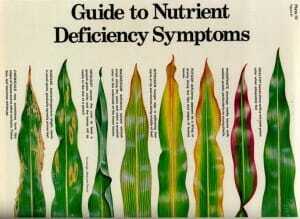

This spring has been a logistical challenge for farmers in many ways, especially nitrogen applications. Farmers were told to forego nitrogen applications just to get the crop in and side dress later. It is now later and rain continues to fall. Nitrogen applied pre-plant in the form of UAN or Urea has the most potential for loss, primarily from leaching too deep into the soil for the late planted corn roots to catch up.
There is no clear cut method to figure out how much nitrogen you may have lost. If you applied everything pre-plant using either UAN or Urea, it may be worth the extra money to add some additional in season. The amount of rain is the driving factor to deciding how much you may have lost. Anhydrous Ammonia has less available up front in the form of nitrate and therefore will likely still be there.
There are still several good options to side dress corn with. Anhydrous Ammonia, UAN, and slow-release or sulfur coated Urea are a few. Injected or shallow incorporated with a UAN or NH3 toolbar is best. Broadcasting Urea works as well, as long as it has a urease inhibitor on it or a slow release form. If you choose to broadcast Urea, its best to do it before V6 so you are not risking yield loss. If you choose to apply all of your nitrogen this way, it’s best to get it on before the plants hit V4. Past V4, it can damage the corn plant and will cause yield loss and larger corn plants. The larger the corn plant, the more urea can end up lodged down in the whorl. As a reminder, the growing point is still below ground until around V6.
This was a good spring to have an in-furrow or starter fertilizer down with your planter. If you did not and your corn is showing some yellowing, there is still time to get some additional nitrogen applied. One important thing to remember is yield potential decreases if you planted late, so if you had a lot of nitrogen down up front you may not need to add more. Take all factors into consideration and remember the power of your organic matter to supply some nitrogen now that we are warm enough for mineralization to keep the nitrogen available to the crop.
If you have any questions, call the Latham office at 641-692-3258 and we will get you in contact with one of our experts.

Tissue sampling has become very popular in recent years as it more accurately represents plant nutrition. That’s why tissue samples should be taken as early in the season as possible to properly detect nutrient deficiencies and make adjustments during the growing season.
For accurate results, avoid testing plants that show severe signs of stress from factors not related to nutrients. This includes damage from insects, drought or flooding, temperature, chemicals or machinery. Also be sure to test normal plants in addition to affected plants in the same stage of growth.
When testing alfalfa plants from beginning stages until the first flower, it’s important to sample from the top six inches of the plant. Collect about 35 samples. When sampling alfalfa closer to or at harvest for comparison, test about 25 whole plants. Collecting soil samples simultaneously can be helpful when paired with the plant analysis to identify nutrient deficiencies, toxicities and imbalances. Take soil samples, at a six- or seven-inch depth, from the same areas where plant samples were collected.
 Once samples have been collected, remove foreign particles like dirt but do so without washing the plant. Place the samples in a paper bag or a large envelope to help prevent them from developing mold during shipping. Soil samples also may be placed in a waterproof container with a correlating label to the field and tissue sample with which it was taken.
Once samples have been collected, remove foreign particles like dirt but do so without washing the plant. Place the samples in a paper bag or a large envelope to help prevent them from developing mold during shipping. Soil samples also may be placed in a waterproof container with a correlating label to the field and tissue sample with which it was taken.
Depending on the lab you use, some reports for plant samples will reveal the concentration of N, P, K, Ca, Mg, S, Zn, Mn, B, Cu, Fe, Al, and Na within the plant. Soil samples submitted with the plant sample will be analyzed for pH, organic matter, P, K as well as special soil test results. Nutrient levels will also be interpreted for soil and plant samples to identify any nutrient issues and potentially offer recommendations. It’s important to note that nutrients can then be soil, seed and foliar applied.
The ability to apply timely nutrition and reach new yield levels is so exciting! Experiment on your farm.
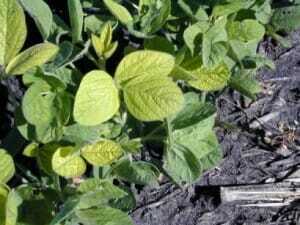
I’ve received an unusually high number of calls this spring from people, who have noticed all the “yellow soybean fields.” These fields are exhibiting Iron Deficiency Chlorosis (IDC).
Contrary to popular thought, IDC is not a disease as there are no pathogens, fungi or viruses that can be blamed for this condition. Rather, IDC is a function of the soil type common in the area we call the “Des Moines Lobe.” This area covers most of Central Iowa, continuing north into Minnesota and even further north and west into the Red River Valley region. These soils typically contain some areas that are poorly-drained and also have higher-than-normal pH values.
This is one of the worst years for IDC in recent memory. Unfortunately, once IDC is noticed in a field, it’s too late to really manage it properly this season. Avoid applying chemicals on these areas that will damage the already-stunted and chlorotic plants. Then be proactive when choosing future soybean varieties for these fields.

There is no such thing as complete resistance to IDC, however, some soybean brands (i.e. varieties) are better than others at handling this condition. Because Latham Hi‑Tech Seeds is headquartered right in the heart of North Central Iowa where Iron Chlorosis is a familiar challenge to us, we have always tried to choose soybean genetics that have the best possible scores against this condition.
Latham® soybean brands like L1585R2, L1783R2, L1985R2 and L2183R2 have all demonstrated that they belong in this elite class of defensive products that are designed to give the best possible performance under some of the toughest conditions that our soybean seed customers run into. This is just one more example of our commitment to bringing the highest performing seed products with the best trait values to all of Latham Country!